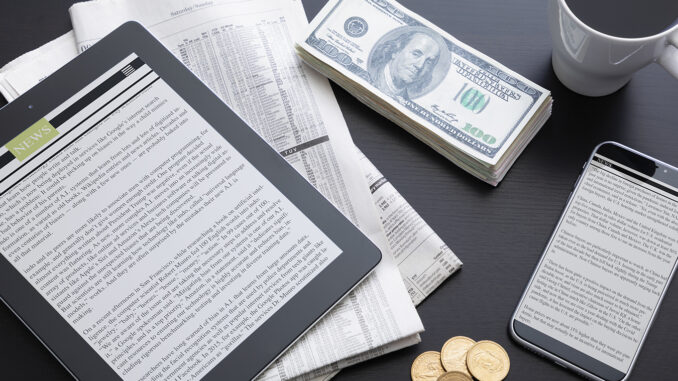
These three questions tend to come up more often during periods of stock market volatility, like during this time of market volatility. The first few months of 2022 have certainly been volatile in the financial markets. Ongoing COVID-19 issues, supply shortages, political discord, the highest inflation rate in 40 years, and now the lunatic leader of Russia flexing his muscles on the world stage with his brazen and unprovoked invasion of Ukraine. Wow! That’s a lot of stuff for the world to digest in a short period of time. No wonder we’ve got financial market volatility.
Inflation is being dealt with, as best we can, via the U.S. Federal Reserve. These very smart folks are charged with keeping our currency (the U.S. dollar) as stable as possible. As a result of that responsibility, they monitor the U.S. inflation rate (rising prices for goods and services in the U.S.) very closely. One of the tools they use is raising or lowering interest rates they set – mostly via a particular rate called the Fed Funds Rate – depending on whether they are attempting to promote higher growth or lower growth in the economy. The Fed Funds Rate is the rate of interest banks charge each other (through the U.S. Federal Reserve Bank) on overnight deposits used to maintain liquidity. That’s a mouthful. Somewhat simply stated, some banks will have more money than they need to balance their books on a daily basis. Those banks can loan that money out overnight through the Fed and receive interest on that money. This Fed Funds Rate has a big impact on other interest rates. When the Federal Reserve raises the Fed Funds Rate, most other rates start to rise over time. That affects how much it costs borrowers of all sizes and shapes from car loans and mortgages to large industrial expansion customers, and even the U.S. Government on its borrowing. Raising the Fed Funds Rate is what the Federal Reserve Board is telling us they are about to start doing in order to cool down the economy a bit – which they are trying to accomplish and lessen the inflation rate in the U.S. (which hit an annualized rate of 7.5% in January 2022 – the highest rate in 40 years).
Current COVID-19 hospitalization numbers have decreased dramatically during the past several weeks. Case in point, even the presidential State of the Union address was held in a joint session of Congress that was allowed to no longer be masked. It seems we are entering the endemic phase of COVID-19. We seem to be learning to live with this disease with more freedom and a bit less annoyance. We shall see.
Most pressing recently in the media is the unprovoked Russian invasion of Ukraine. Geopolitical tension is always unsettling to the world – and, obviously, the world financial markets. All of us humans hate uncertainty. I’m hopeful that a look back at some of the geopolitical events of the past and how the financial markets reacted during and after those times will be helpful as we consider our investments and our decision making.
According to author Greg Eastbrook in his 2018 book, “It’s Better Than It Looks,” the world has been more at peace in the past several decades than pretty much its prior history. Vladimir Putin is now changing that by his power-hungry actions. In our lifetimes, this Russian invasion of Ukraine is certainly unprecedented. Further, Putin seems to have larger goals and aspirations which are yet to be fully seen. A study by LPL Research (LPL Research, How Stocks Do During Geopolitical Events, 01/08/2020, public domain) shows that between 1990 and 2020, the Dow Jones Industrial Average (DJIA) fell an average of 2% during 16 major events, including 9/11 and the Gulf War. The study also found that, “A review of 20 major geopolitical events dating all the way back to World War II showed stocks had fully recovered losses within an average of 47 trading days after an average maximum drawdown of 5%.”
During World War I, the DJIA fell more than 30% and markets were closed for six months. When the markets reopened, the Dow climbed more than 88% in 1915. From the start of World War I in 1914 until the end in 1918, the Dow gained more than 43%, or approximately 8.7% annually.
When Hitler invaded Poland in 1939, the Dow gained 10% on the first day of trading after the invasion. The attack on Pearl Harbor caused an immediate drop of 2.9% in the DJIA. From 1939 until the end of the war in late 1945 the Dow increased more than 50%, or 7% annually.
9/11/2001 brought a drop in the Dow of almost 15% in just a matter of days – and this was in the middle of the dot-com bust and an ongoing recession. Within months the market had grown back to positive territory from those losses. When the U.S. invaded Iraq, which may not be a fair comparison but certainly was geopolitical conflict, stocks rose and were up significantly (30%) for the year 2003.
Vladimir Putin is no shrinking wallflower, and this unprovoked invasion of a neighbor by a superpower is new territory for our world, at least in this era. COVID-19, inflation, supply shortages, political discord, geopolitical tensions… all these things bring a lot of uncertainty into our lives. We all know, and I say this a lot to folks, past performance is no guarantee of future results. This current stock market volatility further affirms one of my favorite mantras: We should never have our short-term money invested in long-term investments. In my office, we refer to that as gambling. Having said that, we also need to keep our long-term goals in perspective as we assess our discipline and risk tolerance – especially during hyper-volatile market periods. Long-term investment success requires patience and discipline. I am available to visit if you would like to discuss your particular situation.
-by Ben Smith
Registered Principal, RJFS
313 East 10th Ave. • Bowling Green, KY 42101 • Phone: 270-846-2656
The information contained in this report does not purport to be a complete description of the securities, markets, or developments referred to in this material. The information has been obtained from sources considered to be reliable, but we do not guarantee that the foregoing material is accurate or complete. Any opinions are those of the author, and not necessarily those of Raymond James. Expressions of opinion are as of this date and are subject to change without notice. Every investor’s situation is unique and you should consider your investment goals, risk tolerance and time horizon before making any investment. Investing involves risk and you may incur a profit or loss regardless of strategy selected. The Dow Jones Industrial Average (DJIA), commonly known as “The Dow,” is an index representing 30 stocks of companies maintained and reviewed by the editors of the Wall Street Journal. Be sure to contact a qualified professional regarding your particular situation before making any investment or withdrawal decision.
Ben Smith Life Compass Financial is not a registered broker/dealer and is independent of Raymond James Financial Services, Inc. Securities offered through Raymond James Financial Services, Inc. Member FINRA/SIPC. Investment advisory services offered through Raymond James Financial Services Advisors, Inc.






